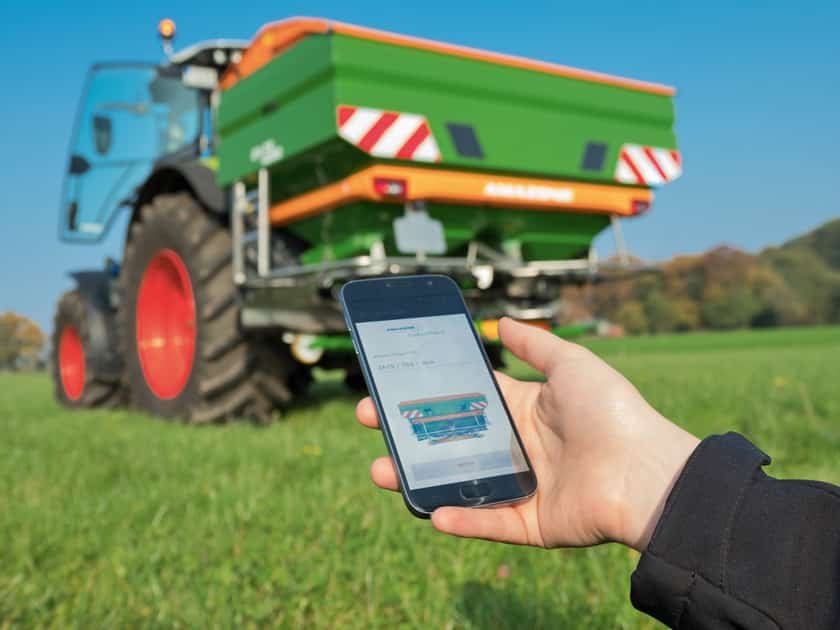
“If this works, the app could be a real innovation and a great help to farmers.”
…, states Prof. Dr. Hans-Werner Olfs. The scientist from Osnabrück University of Applied Sciences and his team have been researching a fertilizer app for about two years. The app will use optical methods in order to identify the composition of compound fertilizers and provide appropriate recommendations for their application. The team is supported by the agricultural machinery manufacturer Amazonen-Werke Dreyer & co as well as the sensor technology specialists from iotec GmbH in Osnabrück. Its founders are, incidentally, graduates of the university themselves.
Targeted distribution of nutrients
Compound fertilizers consist of individual nutrient components that farmers are able to have blended on an individual basis by the agricultural dealer. The problem with these diverse fertilizer blends: There are no set levels for the fertilizer spreaders. Nevertheless, these are important to ensure optimum distribution of the fertilizer over a field.
“The individual fertilizer grains differ in shape, firmness, particle-size distribution and weight. The speed of the rotating discs on the centrifugal fertilizer spreader and the location where the fertilizer falls on the spreader’s disc must be set before fertilizing so that the individual nutrients are evenly distributed over the field,” Olfs explains. It is precisely this task that the “Optiblend” app that has been developed will be taking on in this project. A second application will also provide the agricultural dealer with recommendations on the suitability of various mineral fertilizer compounds during the blending process.
App learns via AI
In the future, actual practice should look like this: The farmer lays out the fertilizer spreader mats in and close to the lane where the fertilizer falls on. Then the farmer photographs the mats with a smartphone. The app then analyzes not only the amount of fertilizer, but also the proportion and distribution of the individual fertilizer compounds. Olfs:
“If the nutrient distribution is poor, the app says how the settings on the fertilizer spreader should be adjusted so that distribution becomes more even. This is the optimal solution”.
In June, Anne Friederike Borchert – research assistant in the project – and her team spread various fertilizer blends across a field. She collected a lot of graphic material during this process. With these images, the iotec specialists are now “training” the app for practical applications.
” The app already has an accuracy of almost 90 percent under optimal lighting conditions. Unfortunately, we are not yet able to achieve this accuracy under real-life conditions. The problem: If the lighting conditions change, for example because the sun is low and shadows are cast on the fertilizer grains, the app has difficulty recognizing the individual compounds correctly.”
These are key findings that will help further improve the software.
Evaluation at the Haste campus
Borchert is now evaluating the fertilizer grain samples collected at the laboratories on the Haste campus at the Osnabrück University of Applied Sciences. She wants to examine the settings that the fertilizer spreader was set up at which yielded the most optimal nutrient distribution. All collected data from the distribution tests as well as the more than 12,000 images of the individual fertilizer compounds and physical values provided by Amazonen-Werke are merged into one database. In turn, the artificial intelligence learns from this database.
“In the beginning I was really quite skeptical as to whether this was at all possible,” confesses Olfs, “but I am pleasantly surprised.”
The research project bears the official name “Smartphone-based optical methods for the characterization of individual compounds in the production of mineral-blended fertilizers and the derivation of distribution properties for the optimized distribution setting of centrifugal spreaders (OptiBlend)”. It is funded by the Federal Ministry of Food and Agriculture to the tune of 260,000 euros. The first beta version of the app will be ready by the end of the year.

